Last Updated on June 20, 2024 by Michelle
What tapped trees are going to give you delicious syrup? You may be shocked to know there are 32 tappable trees, read on for all the details…

There are Many Trees to Tap…
Hi, I’m Michelle. A backyard sugarmaker in New England, and author of Sweet Maple. And I’m here to tell you–you probably have a tree to tap…
Before we dive into this amazing list of tappable trees, I wanted to ask if you’d please consider helping me support sugarmaking education worldwide with every purchase of the SoulyRested Swag. You’ll find the latest designs right here (like the one I’m wearing here) .
I get two questions pretty often that require an emphatic “no” for an answer.
- “I don’t live in a cold winter climate, so I can’t tap trees, right?” and…
- “If a tree isn’t a sugar maple it won’t make good syrup, right?”
The answer to both of these questions is a wholehearted “no.”
3 Things you Need
What kind of trees can you tap?
Here’s a list of 32 sources of delicious syrup, which grow in various climates.
In fact, amazingly, at least one tree from this list grows in every single one of the states in the U.S.
I owe a wholehearted “thank you” to many sugarmakers around the world who helped me compile this list to answer your important question: “What trees to tap?”
I hope you find this list inspiring.
If you’ve successfully tapped an unusual tree on this list–or one that’s not!–I’d love to hear from you in the comments below. I would love to continually update this article with more information from you!
Want to know even more about sugarmaking?
For more details about these trees or info on how to tap trees, make maple confections, and understand the science behind syrup (and why I think it’s the best sugar known to man), you should pick up a copy of my book, Sweet Maple, available where ever books are sold. Or grab an autographed copy of my book for all the deets on everything “SYRUP.”
Even better, join me in my sugarbush, let’s roll up our sleeves together, and I’ll have you a tapping and boiling and bottling pro in no time flat–Join Maple Syrup University today.
3 Things You Need
Is it bad to tap trees too early?
It definitely pays off to be patient! If you tap too early you will loose out on the most productive time of sap flow because the tap holes will have started healing and closing before that time arrives in your sugar season. Lots more in this article from extensive research by The University of Vermont Extension: The Secret to Tapping Trees at the Right Time.
Can you tap a tree too late?
For sure! If you wait too far into the sugar season you’ll miss week’s worth of precious sap collecting. Go here for lots more insights: How to Know the Perfect Time to Stop Tapping
What tools to use?
Folks are always asking what tools they need to make syrup. So I made a list of all my syrup-making tool recommendations. That was easy.
Now the rest of this post is another list. One that wasn’t so easy. It took years of research and talking to sugarmakers around the world to compile this list. But it’s fascinating and I hope you discover, thanks to this list, that you have a few trees you can use to make amazingly delicious all-natural sugar.
What trees to tap?
Trees to tap in the maple family
Sugar maple This is the holy grail of maples because its sap is more concentrated than any other maple, meaning you can make more syrup with less sap.
Bigleaf maple Native Americans have tapped these trees for centuries, but current-day sugarmakers tend to not even know about this power horse, even though bigleaf maples can produce as much sweet sap as sugar maples. I’ve tasted big leaf maple syrup that a reader, Pamela Williams, shipped to my little corner of New England from Vancouver. I can attest that it is delicious.
Black maple These rival sugar maples in sap volume and they even resemble them as well.
Boxelder This hardy tree can often be found in abandoned areas, along railroad tracks, and in ditches, so this may be a sugarmaking tree that you can forage sap from, as long as you’re prepared to transport a lot of the cold sugar water. Boxelders may yield only half the syrup of sugar maples.
Canyon maple/big tooth maple These trees are popular in the Rocky Mountain states and Texas. While their sap has high sugar content, their volume isn’t impressive.
Douglas maple can be found in Alaska, through British Columbia, and into Washington state. It also grows further south into Oregon, California, and Nevada, as well as out to Idaho, Montana, and Wyoming.
Gorosoe The gorosoe is the most popular tapping tree overseas. In Korea, where the tree’s sap is enjoyed by locals and tourists alike as a health drink, “Gorosoe” means “the tree that is good for the bones.” Read chapter 6 in Sweet Maple {{LINK}} for all the details of the science behind syrup to find out why “Gorosoe” happens to be a perfect name.
Greene’s maple can be found in central California.
The New Mexico maple grows in its namesake state as well as Arizona, Colorado, and Utah.
Norway maple Norway maple syrup is less sweet that other maple syrups, but it’s a smooth, buttery flavor.
Red maple While they also produce high yields of sap, rep maples’ tapping season is shorter. But their sap produces a yummy, slightly tart syrup.
Rocky Mountain maple The Plateau Native Americans made syrup from these trees, found in western North America.
Silver maple Like red maples, these trees produce spring buds very early, so they have a short tapping season. But the syrup is delicious.
This article tells you more about how to know when to pull your taps.
Sycamore Maple This variety of maple, native to central and southern Europe, can be found in pockets of the U.S. While it has a pretty low sugar content, sycamore sap makes some yummy syrup with delicious hints of caramel and vanilla.
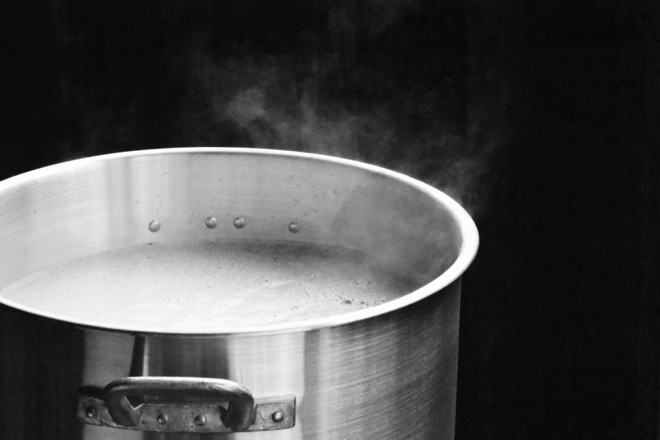
Trees to tap in the walnut family
While many say walnut syrup is delicious, I need to warn you that walnut trees naturally produce a lot of pectin. This means if you don’t filter walnut sap correctly, to remove the pectin, you may wind up with walnut jam instead of walnut syrup. I have no experience making walnut syrup, but the best tip I’ve heard is to let the walnut sap sit (making sure you keep it cold) until the pectin separates, and then it’s easy to just skim it off the top before you boil.
Black walnut The black walnut tree is for valuable for timber, as well as a good source for sap, with a long tapping season. The syrup is nutty, rich, dark, and just a little bitter.
Butternut/white walnut The butternut is similar to a sugar maple for sugar content and volume of sap.
English walnut These trees produce the walnuts we purchase from the grocery store. They can be tapped, but they need especially cold winter and spring temperatures to be tapped successfully.
Heartnut While heartnuts have a good concentration of sugar in their sap, they produce much less sap than maples.
Trees to tap in the birch family
I’ve talked to many people who tap Alaskan white birch who are convinced they need to finish their syrup at a lower Brix to avoid bitterness. Read all about what brix is, why it matters, and how you measure it, right here. But any syrup—maple, walnut, birch, or whatever you’re making—isn’t truly “syrup” at any brix less than 66 percent sugar. I have talked to folks who bottle their birch syrup at 60 percent Brix, but they don’t have birch syrup, they just have birch-flavored water.
Alaskan white birch is a fabulous syrup for baking and marinating meats. I have never made birch syrup, and am very glad I have hundreds of sugar maples, so I probably never will, given how low it is in sugar content and, therefore why it’s so expensive to make. But I’ve been sent a few bottles from readers and can tell you it’s delicious in my as well as a perfect syrup to use to marinate steak (recipe here).
White Birch, the state tree of my home state (New Hampshire), is a different variety than the short Alaskan white birch. Even though it is the state tree, it is not as prominent as the sugar maple, at least not in my corner of New England. Given that all birch varieties have half or less of the sugar content of sugar maple sap, I choose to ignore our white birch trees. But many folks do say they have the sweetest sap of all birches.
Black birch While black birch, native to eastern North America, is most most commonly used to make birch beer, it can be tapped for syrup too.
European white birch While many say this tree’s syrup is “unappealing,” birch syrup is great for cooking.
Gray birch While this variety of birch tree never grows large, the gray birch can be tapped if it grows large enough.
Paper birch While the paper birch requires a lot more boiling time than maples, since it has a very low sugar content (less than 1%), it is the sweetest of the birch trees.
River birch This birch grows in the southeastern United States and in the Northeast, and it can be successfully tapped.
Yellow birch This birch tree sap has a higher mineral composition and a higher number of antioxidants than sugar maples’ sap, but a lower sugar content.
And there are more trees to tap! (kinda)
Sycamore Many sycamore tappers report that sycamore syrup has a touch of butterscotch flavor. Of course most people have never heard of tapping sycamore, so there is a wealth of delicious sycamore sap around the country just waiting to be tapped into.
Sweetgum While sweetgum trees offer quality syrup, they do not offer a lot of sap wood in relation to heart wood.
Palm It turns out palm trees are not really trees at all, but flowering plants. If you happen to live in the only one of all 50 US states that doesn’t have a truly tappable tree (and that’s Hawaii), believe it or not, you can still make syrup, from palm trees. Palm syrup is not made by boiling sap, but by lancing the flower of the palm, to make it weep. The liquid collected from the flower is boiled down to a syrup that, I’m told, is wonderfully honey-tasting sweet.
Shagbark hickory Hickory syrup isn’t made by tapping into the trunk of the tree. Instead, hickory syrup is made from an extract taken from the bark of these trees. See Sweet Maple for a great marketing suggestion for shagbark hickory syrup from Mike Farrell, former director of Cornell’s Uihlein Maple Forest research center.
Tulip poplar Poplar syrup is made the same way as hickory syrup, by boiling down toasted pieces of poplar bark.
Sorghum No, sorghum is not a tree, but sorghum syrup—a favorite in the South—is worth a mention here. The all-natural molasses-like syrup is made by pressing sorghum canes through a mill, to extract the juices out of the cane. Then the juices are boiled down to make syrup.
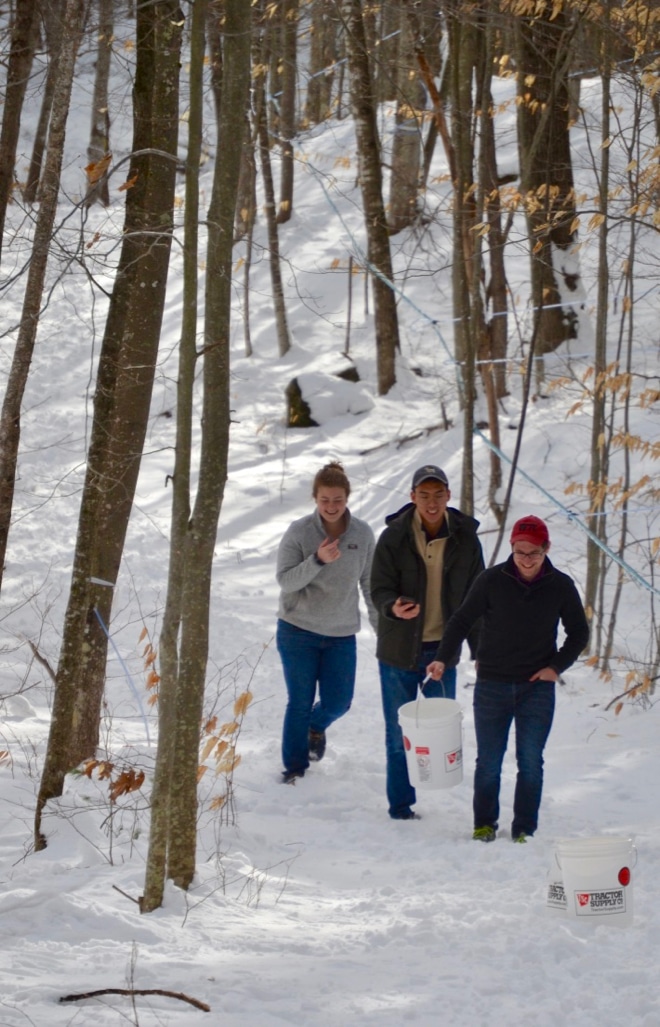
This post contains affiliate links. Go here to read the full (ultra fun) legal disclosure about that.
More information about what trees to tap?
So there you have it. After years of talking to sugarmakers around the world, and compiling lots of great tips and information about making and baking with all-natural syrup and pulling it all together to write Sweet Maple, here’s my list of 30 trees (and one plant) I compiled. See this book for more detailed information about tapping each of these trees along with everything you need to know about backyard sugarmaking, not to mention lots of inspiration in how to use your delicious syrup.
If you do decide to pick up a copy of Sweet Maple, please be sure to take advantage of the amazing bonuses that come with your purchase–valued almost 3x the cost of the book, btw–go here for more info.
Also, you may want to join my facebook group, Maple Syrup Making where experts from around the world offer tips and encouragement.
Oh, and, random note (cause sometimes I’m random), if you’d like to know why I’m super happy when I find ice in my sap bucket, you’ll like this article.
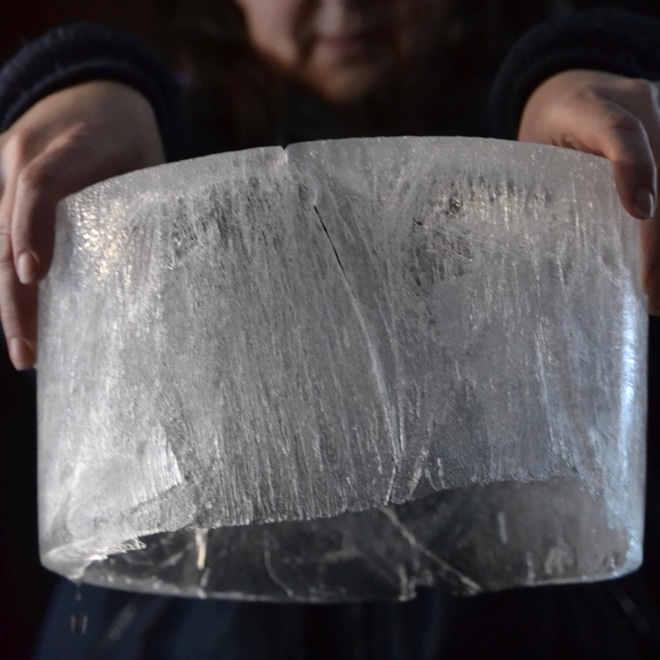
Do you need to live in the maple belt to find trees to tap?
So I still haven’t told you why I answer “no” to that other question I get all the time. You know the one about “Can I tap trees if I don’t live in the “Maple Belt”?”
In researching and writing my book, I was blown away at how many folks I talked to who successfully tap well outside of the Maple Belt.
Pamela Williams is a great example. She has learned to watch the barometer more than the thermometer to know when to tap. Pamela doesn’t have sugar maples where she lives, on the west coast, so she taps bigleaf maples. And she’s part of a large group of sugarmakers who call themselves the SapSuckers. They not only tap very successfully outside of the maple belt, without sugar maples, but they love educating others how to do the same thing.
Pamela explains, “Bigleaf sap runs happen after extreme weather events. Barometric swings between the atmosphere and the tree produce sap runs as good as, if not better than, a reliable freeze-and-thaw cycle,” which is important when Vancouver experiences a mild winter.
btw, if you’d like to know more about the specifics of tapping bigleaf maples, you’ll enjoy this little book: Bigleaf Sugaring, by Gary and Katherine Backlund.
From my family to yours, Happy Tapping!
Want to be an expert sugarmaker?
It took Bill and I sooo many years of mistakes and trial and error before we understood the art of backyard sugarmaking, but I was determined to use all we learned to teach others. You don’t have to waste years of effort and batches of trashed syrup (been there).
Grab a copy of my detailed book and dive into Maple Syrup University–I created this 12-module resource of videos, printables, and detailed workbook so you could be an expert at this in no time flat.
3 Things You Need
More info about trees to tap & making syrup:
Take a FREE self-paced e-course and learn all my syrup-making tips and secrets
What tools are needed for backyard sugarmaking?
What is brix? And what tool should you use to measure it?
How to make syrup, step by step
Build a reverse osmosis system for maple syrup
The godly will flourish like palm trees and grow strong like the cedars of Lebanon. Psalm 92:12
Pin this for later!
Click on the image below to pin this post.
Find out why SoulyRested was considered to be one of the Top 20 Must-Read Homesteading Blogs of 2018
and then one of the Top Homesteading Blogs of 2019 as well.
I’d love to connect!
To find me in some other neck of the woods, just click any (or every!) icon below:
And please follow along!
Please take a second to follow along here on SoulyRested to catch up on a few of my memorable mishaps, discover fascinating things about my centuries-old farmhouse, or enjoy the inside scoop on the secrets legit homesteaders might not tell you.
And have you tried my a-MAAHZ-ing Maple Sugar Cookie recipe that’s in my Resource Library? You’ll have instant access when you sign up for my FREE e-course of sugarmaking secrets, right here–>

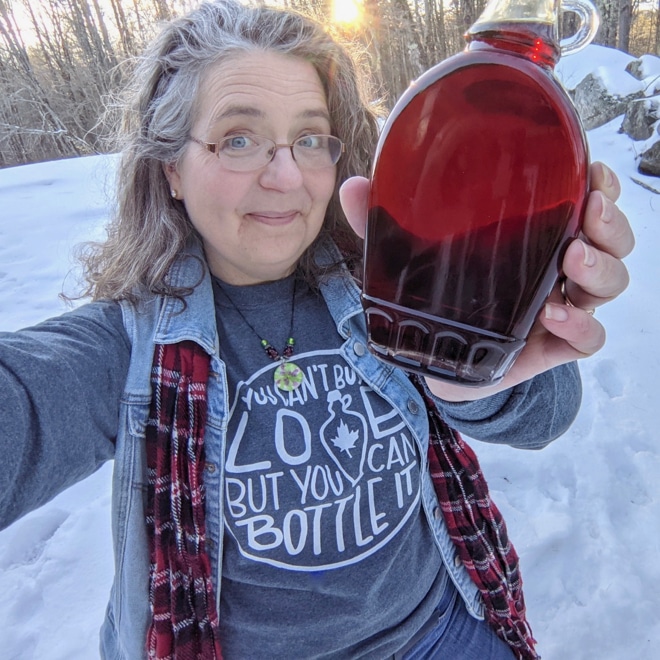
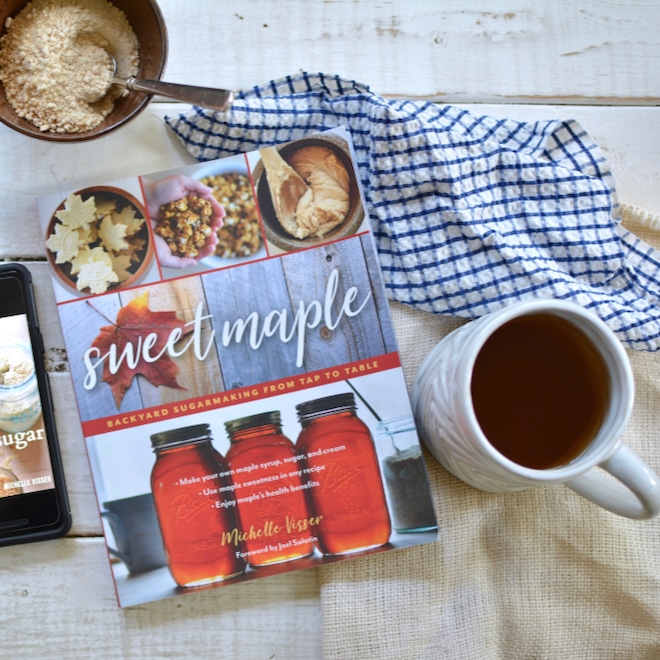
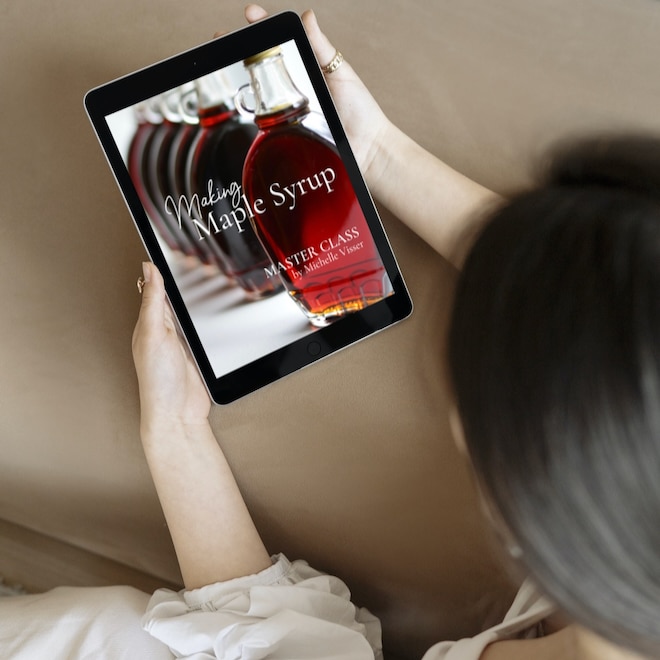
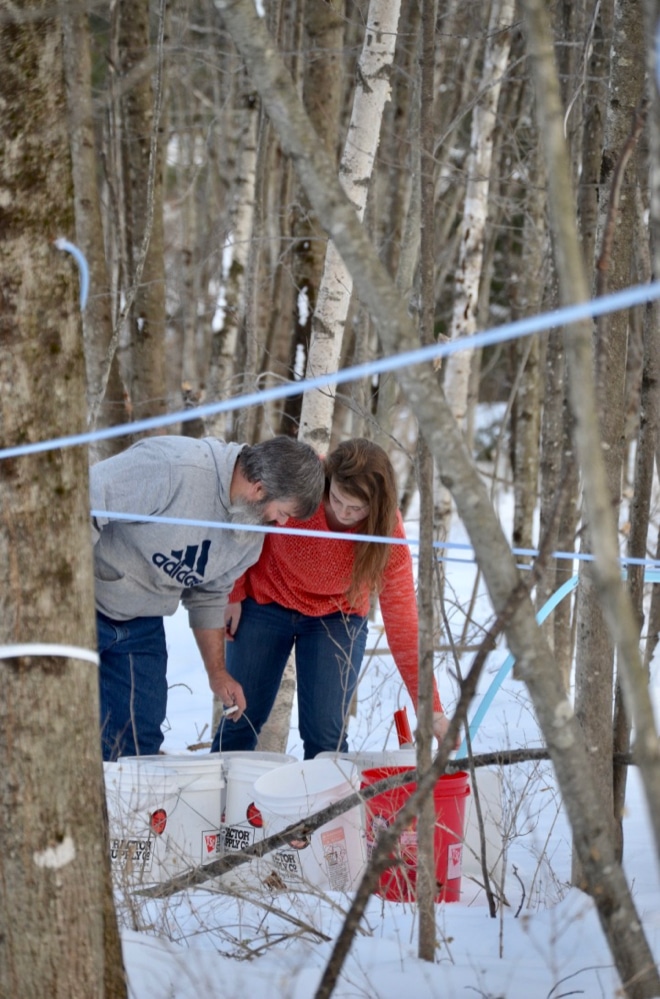
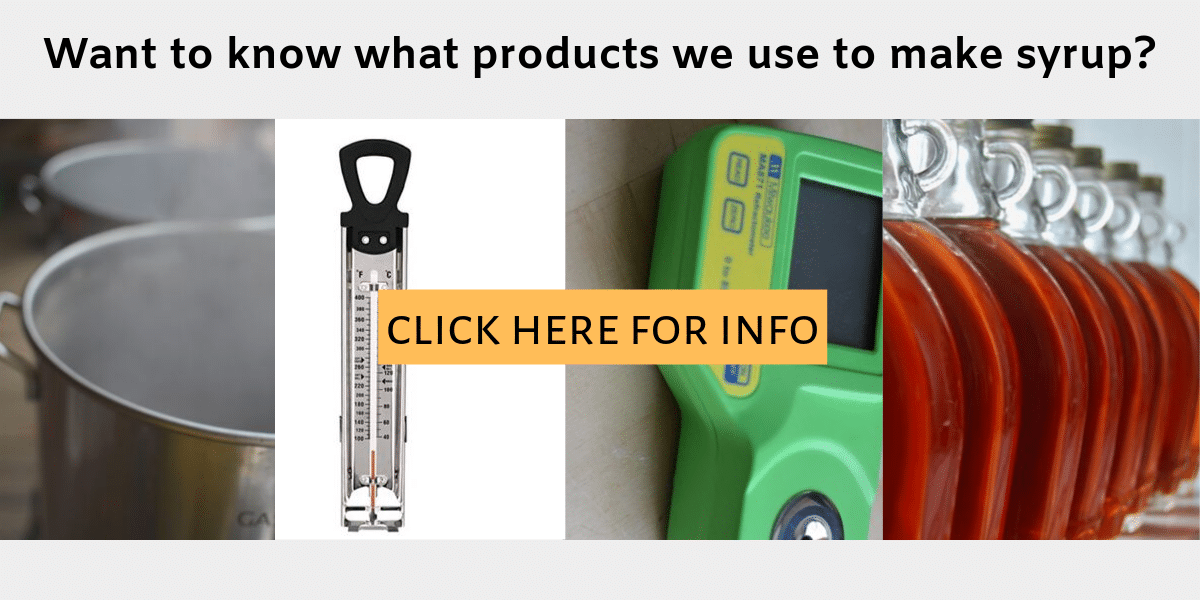
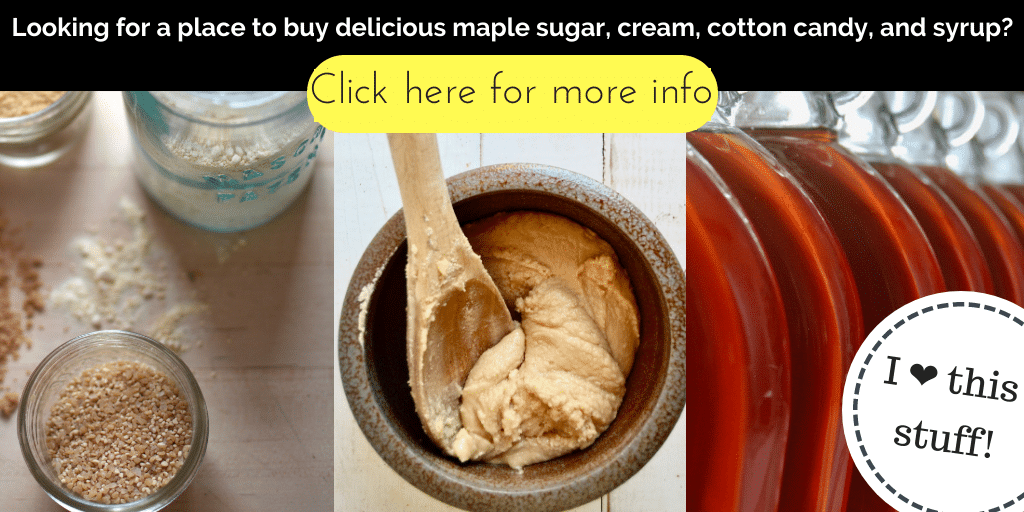
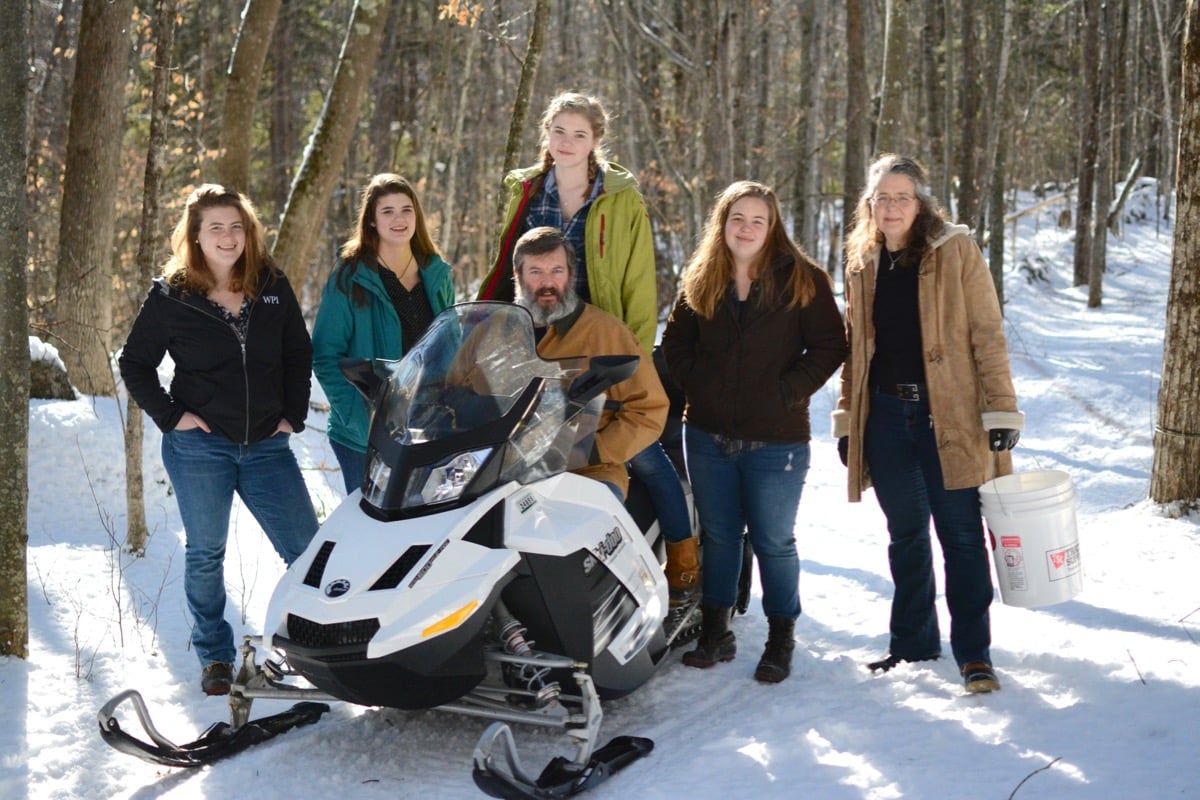

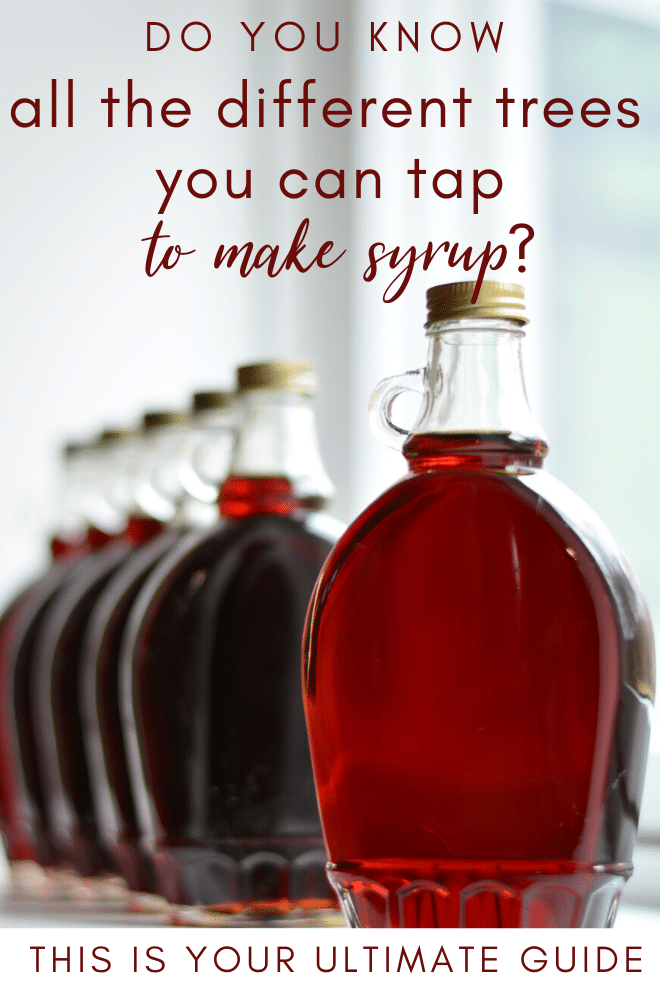




I read your list with interest. I remember as a kind, my father and I helping a neighbor make maple syrup.
I read your list with interest. I remember as a kind, my father and I helping a neighbor make maple syrup.
Do you know what syrup can be made from the trees listed from personal experience? Thank you.
B. Ouimet
I personally have not tapped any of my alternative trees here on our sugarbush. I still have 100s of untapped maples that I don’t have the ability to tap and process the syrup until we upgrade our evaporator, so no, from personal experience I can’t help with other options but I did interview and chat with many sugarmakers around the world while writing my book, Sweet Maple, and created this list as a result of that combined knowledge. 🙂 Hope that helps.
I was so badly hoping to see pecan trees listed here, as I have a huge one in my back yard! With no other pecan trees within pollinating distance, I cannot get yummy pecans from it. I was hoping to get some syrup ☹
I am new to being interested in this particular old ways of homesteading/way of life. I have made molasses with my father many times and have precious memories of those times, I only wish he was here with me now to probably take on something new to us in tapping Maples cause it’s one of the few things we never got to attempt on our farm.
I too have often thought how my own dad would have loved making maple syrup with our family. Bitter sweet memories… <3